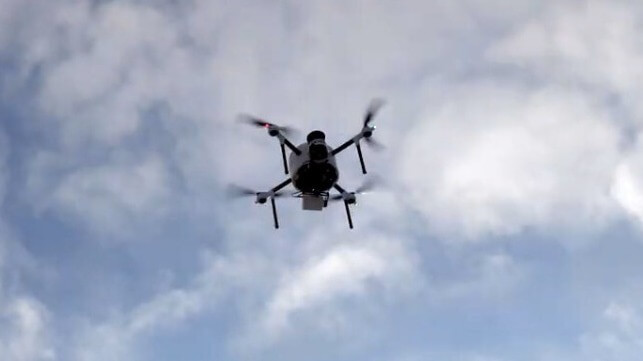Video: Drones Search for Floating Debris in Port of Antwerp

One of the challenges that all commercial ports face is keeping their waterways and the area around the piers free of floating debris that not only contributes to pollution but can also damage ships. Seeking to future proof operations, the Port of Antwerp has come up with an innovative digital solution to detect floating debris through the use of drones.
To reduce water pollution, impact on biodiversity, and damage to ships, it is important to detect and clean up this waste as soon as possible. Officials that the Port of Antwerp report every year, about 50 tons of floating debris are collected from the docks in the port. This debris is made up of plastics, wood, cardboard, organic material, and mooring lines. Their challenge is to constantly scour the port’s more than 46 square miles looking for the waste.
"A clean and safe port is an absolute priority. The use of drones for floating debris detection is a fine example of how innovation and digitization can contribute to this,” said Port of Antwerp's Innovation Enablement Manager. The port hosted Petra De Sutter, Deputy Prime Minister and Minister of Civil Service, Public Enterprises, Telecommunications and Postal Services in the port's Nautical Operations Centre to explain the use of drones and some other innovative digital applications in the port.
To detect and clean this up as quickly as possible, Port of Antwerp is deploying drones. According to port officials, the unique bird's eye views from the drones can make a significant contribution to detecting floating debris. The Port of Antwerp developed a "machine vision" application that, based on drone images, automatically builds a map that indicates the location of the floating debris. With the use of drones, which will soon be flying over the entire port several times a day, floating debris can then be located and cleaned up more quickly and efficiently.
“I see a glimpse of the future here in the port of Antwerp,” said Minister of Telecommunications Petra De Sutter. “Drones that keep the port clean and safe. It is a good example of how digitalization, a clean environment, and the fight against climate change can go hand in hand.”
The use of drones to detect floating debris is just the latest application of the technology to the port. Last year the port demonstrated drones for increased security patrols. According to Port of Antwerp, the use of drones will play an increasingly important role in the port of the future. The ambition is to develop a network of autonomous drones that can provide a live feed of the various port activities and support the Harbor Safety & Security unit and its security partners.
Among the tasks port officials envision for the drones include inspecting infrastructure, surveillance and monitoring, incident management, berth management, and the detection of oil spills or floating debris. To stream images from the drones in real-time, 5G will be used in the future. This capability has already been demonstrated with incident management. Last year, the fire department was supported by a live stream of drone footage via the 5G network to deal with a fire in the port area. The combination of color and infrared images helped the fire department to gain a better idea of the location of the fires.
